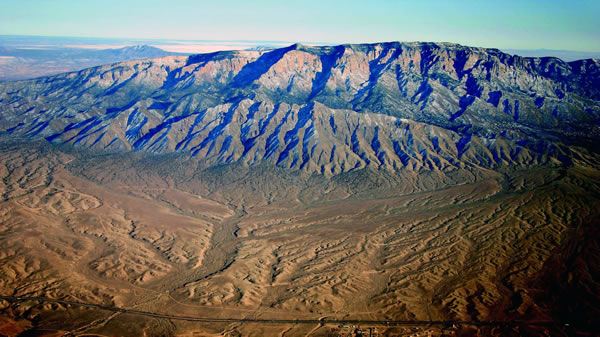
Geologic Tour of the Rio Grande Rift
Contents:
Tour site types:
•State Parks
•Federal Parks
•Other Features
(Click map to hide/show the physiographic province overlay.)
Brief Description
The Rio Grande rift is a north-south trending zone of approximately east-west oriented extension that bisects the state of New Mexico. The extension is due to the Colorado Plateau pulling away from the High Plains, which causes the Earth's crust to be stretched and thinned. New Mexico is not the only area affected by this extension; the Rio Grande rift has deformed areas as far north as Leadville, Colorado and as far south as west Texas. The course of the Rio Grande is controlled by the rift. The northern part of the rift is relatively narrow, consisting of a series of westward-stepping, en echelon basins flanked by rugged mountains. The amount of extension increases toward the south. The rift broadens considerably south of Socorro and merges with the Basin and Range province in southwestern New Mexico. Rio Grande rift extension began earlier in southern New Mexico (~36 million year ago) compared to the northern New Mexico (~26 million years ago), with extension peaking 10 to 16 million years ago. The axial basins are in the form of half-grabens that are tilted strongly toward the east or the west, depending on the location of the master fault system on the margins of each basin. As much as 15,000 feet of rift sediment has accumulated in the axial basins of the Rio Grande rift, forming important aquifers for some of the largest cities in our state.

Grant Meyer
References
- Keller, G.R., and Cather, S.M., 1994, Basins of the Rio Grande rift: Structure, stratigraphy, and tectonic setting: Geological society of America special Paper 291, 304 pp.



